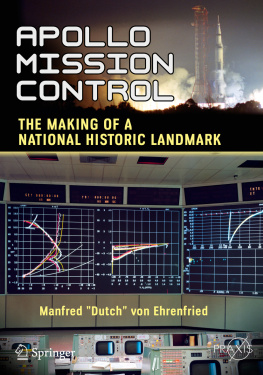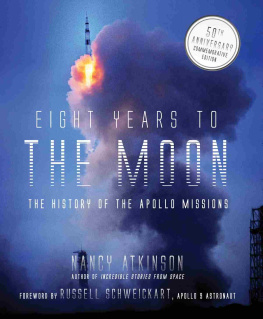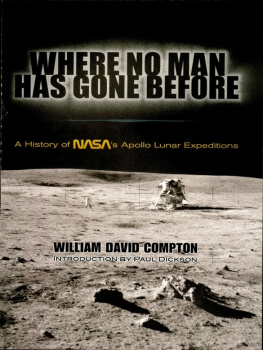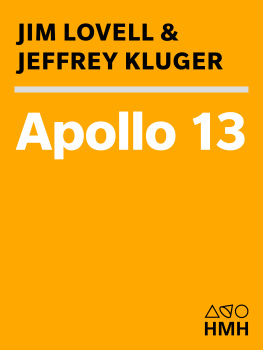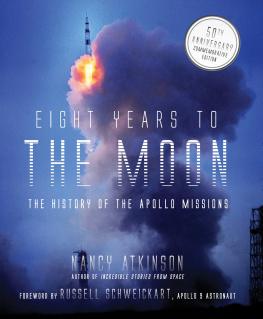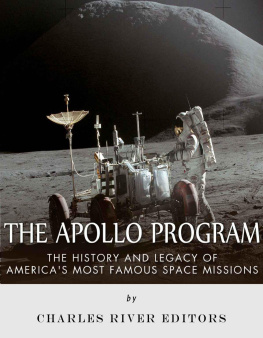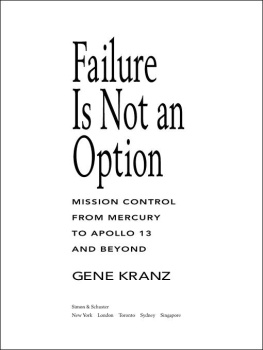1. Introduction
In the 1300s, Geoffrey Chaucer said Time and Tide Wait for No Man. While we cant stop the ravages of time, we can certainly stop and try to capture what was a truly great and important period of time in Americas history. In this case, not only a great period in Americas history, but of a noble activity called human spaceflight. And that unique place is called the Mission Control Center.
Nowadays known as the Johnson Space Center (JSC) the Manned Spacecraft Center (MSC) was opened in 1964. Its location led to it also being referred to as the Houston Mission Control Center (MCC-H). It served its function by giving operational support for the Gemini, Apollo, Apollo-Soyuz, Skylab, and the early Space Shuttle flights. It is the work to preserve some of these facilities that is the subject of this book.
Building 30 is a five story tall structure with three floors that consists of the Mission Operations Wing, the Operations Support (later redesignated the Administrative Wing) and an interconnecting Lobby Wing. It is the Mission Operations Wing from which space missions were controlled. It is here that the world sees NASA conducting spaceflight out in the open, and it is here, and especially the third floor, that has become of historical importance.
Three basic functional areas known as the Display/Control System, the Real Time Computing Complex (RTCC), and the Communications, Command and Telemetry System (CCATS) supported the primary task of conducting manned spaceflight. In the publics eye, this is the Mission Control Center.
The first floor housed the RTCC, the CCATS, and other equipment areas. It supported operations in the two upper floors and also interfaced to the Manned Space Flight Network and the Cape Canaveral launch facilities and down range tracking stations. The Display/Control System, which is distributed throughout the building, is the input/output of the other two systems.
The two floors above housed the Mission Operation Control Rooms (known then as MOCRs, and pronounced moh-kers). The one on the second floor was MOCR 1 and the one on the third floor was MOCR 2. There were many other rooms that supported the MOCRs, including all the functional areas providing data to the flight controllers in the MOCRs. The MOCR was quite simply the place for making spaceflight history.
This book will focus primarily on the third floor MOCR 2 because it is this area and surrounding rooms that, following two years of study by the National Park Service (NPS), led on December 24, 1985 to the Department of Interior notifying NASA Administrator James M. Beggs that the Apollo Mission Control Center was to be designated as a National Historic Landmark (NHL).
From MOCR 2 on the third floor came the black-and-white grainy images on 600 million peoples television sets during the first lunar landing on the evening of July 20, 1969 and all of the landings that followed. In addition to most Apollo flights, recognition also extends to most of the Gemini and Space Shuttle flights up through STS-53 in 1992. Many unmanned Apollo flights were controlled from MOCR 1, as were Apollo 7, four Skylab missions, and many Shuttle flights. But, as far as the restoration of the NHL is concerned, the period of significance runs from 1964 to the end of the Apollo lunar missions in 1972.
MOCR 2 has not supported missions since 1992, over a quarter of a century ago. Time, as well as new and different missions and advanced technology have made the original contents of the building, including the MOCRs, obsolete. The original facilities and equipment no longer support current missions. NASA has retired them in situ, not with a pension but with a penchant for preserving at least MOCR 2 in recognition of its contribution to Americas space program. Its new purpose will be to enable visitors to inspect up close and personal what was previously only available to television viewers two generations ago during the Golden Age of Space. It will serve to demonstrate to a new generation of youngsters from all nations what young people can accomplish; for many of us were only in our twenties at that time. And hopefully this historic landmark will also demonstrate to those in Congress what happened long ago when Presidents (of both parties) and the Congresses made things happen in the national interest.
This book briefly takes us back to the origins of the American space program, to describe how the concepts of spaceflight and mission operations came about, and why and how the Houston Mission Control Center was built. It describes the rooms and positions for both operations and support personnel, and the consoles and displays that they operated. It goes behind the scenes that were shown on TV and describes the facilities and equipment that supplied the flight operations team with the data and functionality they required to support those amazing (and now iconic) missions. It is the place where we heard those words and phrases that are now part of our language and psyche, such as Houston, Tranquility Base here, the Eagle has landed and Houston, weve had a problem. When astronauts in space called home, they were talking to flight controllers in what the NPS calls the Apollo Mission Control Center. This is what many of us are eager to save from, as Chaucer so elegantly put it, the ravages of time. Those same people are now calling out to others for help. Thousands of people all across the world are donating funds to help with the restoration of these historic facilities. Yet more money will most likely be needed.
The book describes how, during more than half a century since MCC-H was built as a state-of-the-art facility, space missions have changed and why it could no longer support future activities without extensive modifications in hardware, software and operational concepts. It was quite simply time to move on! This led to the eventual abandonment of the third floor MOCR 2. After the lunar missions ended in 1972, it was deactivated and modified for the Space Shuttle, reopening in 1982. It continued to support missions until 1992, when it was abandoned for good. The facility was spent; it was time for others to carry on the nations space program. The room had seen it all; from the momentous to the tragic.
The rooms lay empty for years and were then used for storage, and for visitor tours and social gatherings. This led to some console degradation and even theft of items. In some places, rips in the carpets were hastily covered over with duct tape. JSC provided power and air conditioning to the facility, but undertook no maintenance and took little interest in its deteriorating condition.
As former flight director Gene Kranz observed, The overall condition is not emblematic of a National Historic Landmark.
While some people at JSC focused on newer control facilities, now known as Flight Control Rooms (FCR), others were concerned about the historical value of Building 30 and especially its MOCRs.
This book describes the efforts to restore to a presentable level those portions of MOCR 2 and some of the surrounding support rooms and facilities. It focuses on the research, the contracting, the raising of funds, and the industrial team that was contracted to undertake the work. By 2014, a formal working group of only 14 people gathered to plan the proposed work. This included people from various JSC organizations such as the facility and property people, the History Office, the Planning & Integration Office, former NASA flight controllers, as well as people from the National Park Service and the Public Lands History Center at Colorado State University and subcontractors.

